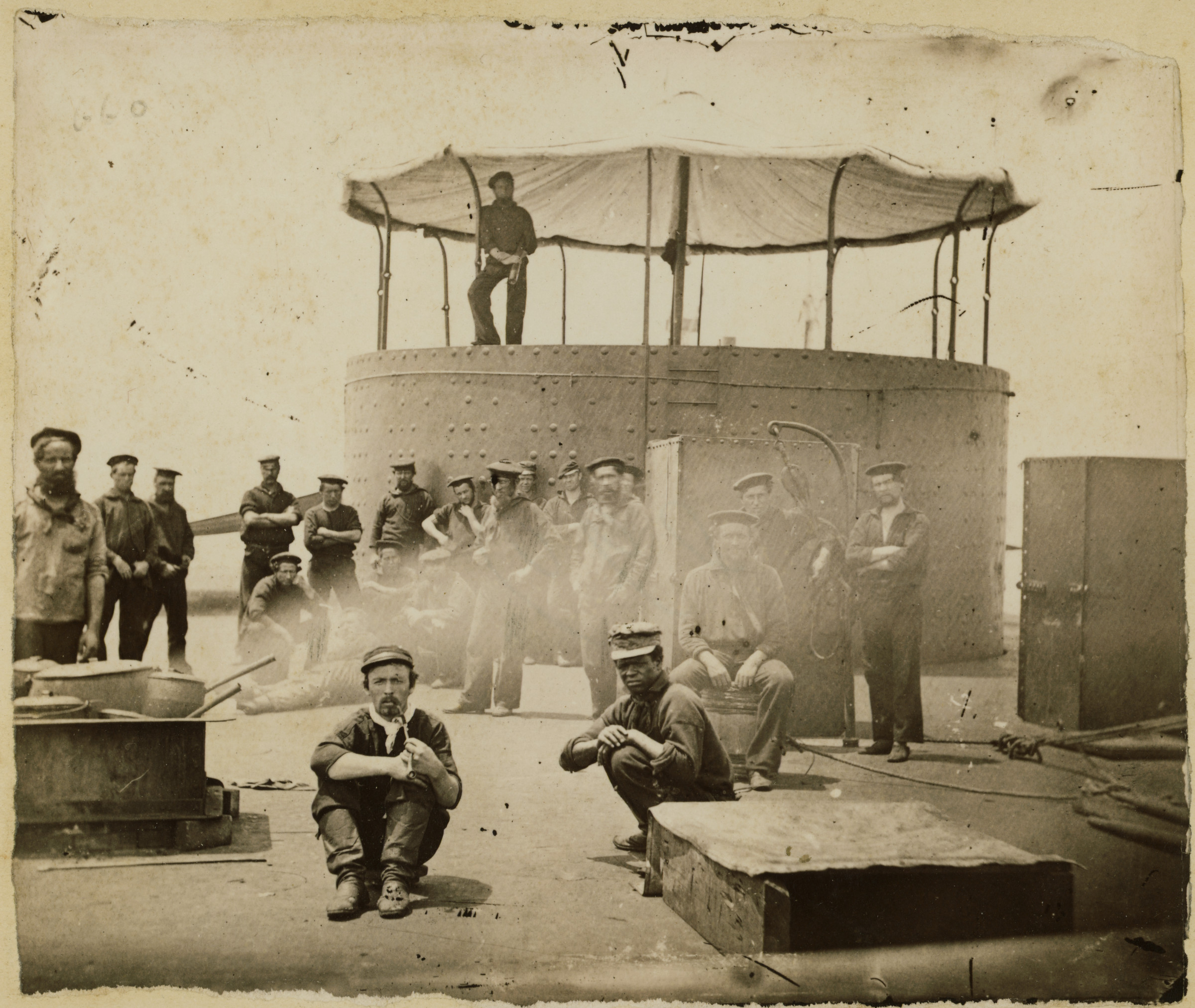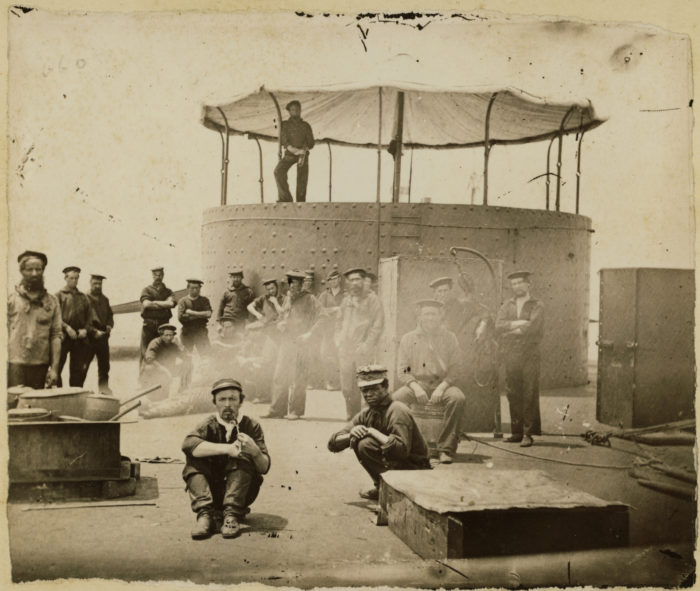
Black History Month: African American Sailors Aboard the USS Monitor

Crew of the USS Monitor, July 9, 1862. Siah Hulett Carter is the front, seated, right sailor. Photo credit: The Mariners’ Museum and Park.
When the Civil War began, many enslaved African Americans wanted to join the Union forces. Since at the time, enslaved people were considered “property” under the law, Union leaders were able to use the term to deem them “contraband of war” (contraband being property attained or confiscated by a foreign/warring entity) and refuse to return them. In 1861, the Confiscation Act was passed by Congress to allow the seizure of Confederate military property (including formerly enslaved people). There was nothing prohibiting freed African Americans from joining the Union forces, and the Union Navy integrated these sailors into their ship’s crews.
Monitor National Marine Sanctuary, the first sanctuary to be designated, honors the crew of the USS Monitor and particularly the sailors who tragically lost their lives in the sinking of the Monitor on December 31, 1862. Researchers can positively identify eight men of African American descent in the USS Monitor’s crew, although there were likely more, based on correspondence and letters. Robert Cook, Robert Howard, and Daniel Moore all perished in the sinking of the Monitor. The other five African American sailors who were aboard all survived the sinking. William Nichols and William Scott both deserted the Navy at different times in 1863. William Jeffrey moved home to Philadelphia. Edward Cann disappeared from subsequent records.
- William Nichols was a 19-year-old freeman born in Brooklyn, New York. He enlisted in the Navy in 1862, and joined the Monitor’s crew as a landsman before being promoted to officers’ steward.
- Robert Cook was born in Gloucester County, Virginia and joined the crew in October 1862 as a first-class cabin boy at age 16.
- Robert Howard was born in Howard County, Virginia and joined the crew in November 1862.
- Daniel Moore joined the crew as landsman in November 1862. He was born in Prince William, Virginia.
- William Scott, who was born in Petersburg, Virginia, joined as a first-class boy in August 1862.
- Edward Cann joined the crew as a first-class boy in November 1862.
- William Jeffery was born a freeman in Philadelphia, Pennsylvania. He joined the Navy as a landsman in 1861 and was transferred to the Monitor in October 1862.
- Siah Hulett Carter (given name Josiah Hulett) was an enslaved man who escaped from Shirley Plantation in May 1862. Under cover of night, he rowed a boat to the Monitor, which was at anchor off the river bank. He joined the crew as a first-class boy and was assigned various duties as a coal heaver, carpenter, and assistant to the cook. Carter is the only African American crewmember we have a photo of (pictured in the graphic above).
Compared to his crewmates, we know the most about his life after the sinking of the Monitor. He continued to fight for the Union onboard USS Brandywine, Florida, Belmont, Wabash, and Commodore Barney. He suffered a frostbite wound on the last of these vessels, and was awarded an honorable discharge on May 19, 1865 after three years of naval service. He later married Eliza Tarrow, with whom he had thirteen children. He worked as a laborer in Philadelphia, Pennsylvania before his death in 1892. Siah Hulett Carter is buried in Eden Cemetery.
50 years ago, Monitor National Marine Sanctuary was designated to help protect and preserve this incredibly important part of our nation’s history and maritime heritage. Learn more about the “little ship that saved the nation” at https://marinesanctuary.org/sanctuary/monitor/!
Sources
National Veterans Memorial and Museum
